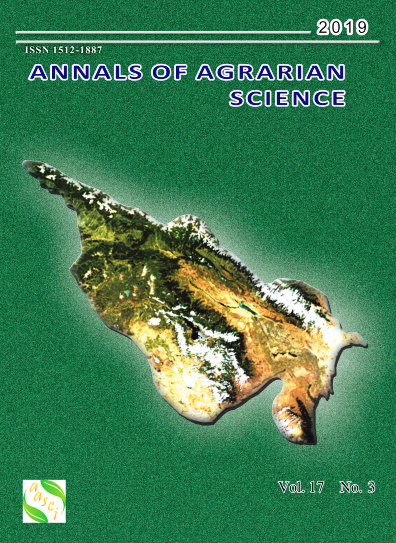Simulation of dust convective transfer of Zestafoni ferroalloy plant
Keywords:
Atmosphere, dust, pollution, simulation, convection, stationary sourcesAbstract
Kinematics of aerosols propagation emitted into the atmosphere from aeration lanterns of gas-trapping units of workshops No. 1 and No. 4 of Georgian Manganese LLC is studied using numerical integration of the system of three-dimensional non-linear non-quazistatic equations of thermal convection and admixture transfer-diffusion in the atmosphere. It is obtained through modeling that a kinematics of dust propagation emitted into the atmosphere significantly differs from each other in cases of calm air and background motions. During calm air a dust propagation is caused by a wind velocity field generated as a result of thermal convection. At this time wind velocity convergence zone is formed in the vicinity of aeration lanterns. This zone is gradually getting smaller with height increase and turns into divergence zone in the upper part of the surface layer of the atmosphere. Ascending convective air and dust stream is obtained above each source. Vertical velocity formed as a result of convection process reaches 5 m/s. Horizontal components of wind velocity in divergence and convergence zones don’t exceed 3 m/s. In case of background wind a dust is propagated as a result of both ordered (vented) horizontal and vertical streams, and small-scale vortex and diffusive motions. Advective, convective and turbulent dust diffusion under the influence of background motions forms the vertically inclined trail-like pollution zone. There is no place of vortex motion in the obtained zone.



